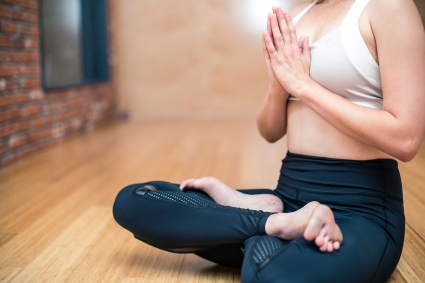Yoga is a physical, mental and spiritual practice originating in India. The word "yoga" comes from the Sanskrit root "yuj", meaning "to unite, to join, to harness". By practicing yoga, we seek to unite mind, body and spirit to achieve a state of peace and serenity. Yoga includes a wide range of techniques, such as physical postures (asanas), breathing exercises (pranayama), meditation techniques and spiritual practices.
The History and Origins of Yoga : A Journey Through the Ages
Yoga is an ancient practice that originated in India. The first written traces of yoga date back to around 3000 BC, in the Vedic texts of ancient India. These texts include the hymns of the Rig Veda, which mention yoga as a practice that enables connection with the gods and the attainment of spiritual enlightenment.
Over the centuries, yoga has evolved into a complex practice comprising many different techniques. Classical yoga comprises eight "branches" or "paths" designed to guide practitioners towards spiritual awakening. These branches include asanas (physical postures), pranayama (breathing exercises), meditation, concentration, "ethical laws", "subtle sensations", mental concentration and absorption in the infinite.
In recent decades, yoga has become very popular in the Western world, where it is mainly practised as a form of physical exercise and relaxation.
The benefits of yoga : strengthen your body and soothe your mind
There are many potential benefits to the practice of yoga. Here are some of the most common benefits :
- Stress and anxiety relief : Yoga can help relax the mind and body, which can help reduce stress and anxiety.
- Improved flexibility and muscle strength : Yoga postures often involve stretching and movements that strengthen the body's muscles.
- Pain relief : Yoga can be useful for relieving chronic pain, such as backache and joint pain.
- Improved breathing and circulation : Yoga breathing exercises can help improve breathing and circulation.
- Developing concentration and mental clarity : Meditation and other yoga techniques can help improve concentration and clarify the mind.
- Increased sensitivity to the body : The practice of yoga can help to develop a better knowledge and understanding of one's own body.
While these benefits are widely recognized, it's important to note that research into the precise benefits of yoga is limited. As with any form of exercise, it's important to talk to a health professional before starting a new yoga routine.
A Sample Yoga Session for Beginners : Relax and Connect with Yourself
Here's an example of a short yoga session that includes basic postures for beginners :
- Start by sitting cross-legged on a flat, comfortable surface, with your hands resting on your knees. Take a few deep breaths to relax and focus your mind.
- Raise your arms above your head and stretch, breathing in deeply.
- Exhale as you bend your body forward into the "mountain" or "tadasana" posture. Let your arms hang by your sides and stretch your spine.
- As you inhale, lift one leg and place your foot on the opposite thigh to do the "tree" or "vrikshasana" posture. Hold for a few seconds, then switch legs.
- As you inhale, raise your arms to the sky to do the "candle" or "sarvangasana" posture. Hold for a few seconds, then exhale as you return to a standing position.
- Sit back on your heels and bend your torso towards the ground to do the "lateral twist" or "ardha matsyendrasana" posture. Hold for a few seconds, then switch sides.
- Lie on your back and stretch your arms along your body to do the "death" or "savasana" posture. Stay in this posture for a few minutes to relax completely.
Finally, sit cross-legged and take a few deep breaths to bring the yoga session to a close.
It's important to practice these basic postures with care and to listen to your body's messages. If you feel pain or discomfort while performing these postures, stop immediately and seek help from a qualified yoga teacher. In general, it's advisable to practice yoga under professional supervision to avoid injury and maximize the benefits of the practice.
The ideal yoga outfit : comfort and freedom of movement
To practice yoga, it's best to wear loose, comfortable clothing that allows easy range of movement. Avoid tight-fitting clothes or those that restrict movement. Clothes made from cotton or natural materials are generally the best choice for yoga practice, as they allow the skin to breathe and wick away perspiration.
It's also important to wear comfortable shoes for your yoga session, as you'll often be barefoot during practice. If you're practising yoga outdoors, it's advisable to wear shoes suited to the surface on which you'll be practising.
In general, your choice of yoga outfit depends on your personal comfort and the type of practice you'll be doing. The important thing is to feel comfortable and to be able to move freely during your yoga session.
How do I find a qualified yoga teacher ?
There are several ways to find a qualified yoga teacher in your area. You can, for example :
- Ask for recommendations from friends, family or colleagues who already practice yoga.
- Consult online directories of yoga teachers and yoga studios in your area.
- Contact wellness or fitness centers in your area to find out if they offer yoga classes, and if so, which teachers teach them.
- You can also search on social networks to find yoga teachers near you.
It's important to check that the yoga teacher you choose is qualified and experienced, to maximize the benefits of yoga practice and avoid injury. You can ask the teacher to show you his or her diplomas and certifications, as well as references from satisfied customers, to assure you of his or her quality. You can also take a trial class to see if the teacher and his or her teaching are right for you.
Updated on 10 September 2023 at 12:00







